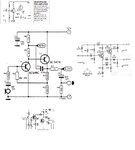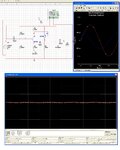jegues
Member level 3

We are attempting to design a amplifier for a microphone. The end goal is to amplify what is being said through the microphone specified below through a set of speakers or headphones.
See figure attached for the design parameters as well as the parts list we are given.
Note: The output current is limited to a maximum of 20mA.
I'm a little flustered with all the requirements of this design in addition to the limited parts list. I'm having trouble figuring out how I should start my design or even what direction to move in.
What kind of stages I should be considering with the components I'm provided? Should I focus on one aspect of the design at first (i.e. gain requirement) and sort out the others later on? If so, which design aspect is crucial to achieve before attempting to establish other design parameters?
Can someone give me a push in the right direction so I can get this design started?
I went and asked my professor for a good point to start and he had recommened that I start by considering the specific input and outputs we're given, and make an attempt at designing the amplification stage of the amplifier. I'm a little confused about what I'm supposed to deduce about my inputs/outputs given the datasheet of the microphone, can someone clarify?
He mentioned to me that in this stage I need to achieve the required gain as well as the bandwidth, and mentioned that if I could not achieve both in one stage that I should simply use 2 amplification stages to achieve the required bandwidth and gain.
I've attached the datasheet specific to the microphone we are provided.
I will be posting whatever design/results/thoughts I come up with for more feedback/improvement.
Thanks again!
See figure attached for the design parameters as well as the parts list we are given.
Note: The output current is limited to a maximum of 20mA.
I'm a little flustered with all the requirements of this design in addition to the limited parts list. I'm having trouble figuring out how I should start my design or even what direction to move in.
What kind of stages I should be considering with the components I'm provided? Should I focus on one aspect of the design at first (i.e. gain requirement) and sort out the others later on? If so, which design aspect is crucial to achieve before attempting to establish other design parameters?
Can someone give me a push in the right direction so I can get this design started?
I went and asked my professor for a good point to start and he had recommened that I start by considering the specific input and outputs we're given, and make an attempt at designing the amplification stage of the amplifier. I'm a little confused about what I'm supposed to deduce about my inputs/outputs given the datasheet of the microphone, can someone clarify?
He mentioned to me that in this stage I need to achieve the required gain as well as the bandwidth, and mentioned that if I could not achieve both in one stage that I should simply use 2 amplification stages to achieve the required bandwidth and gain.
I've attached the datasheet specific to the microphone we are provided.
I will be posting whatever design/results/thoughts I come up with for more feedback/improvement.
Thanks again!





